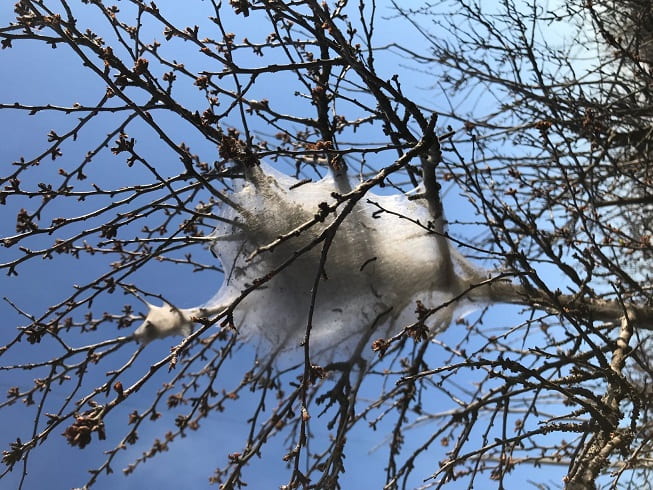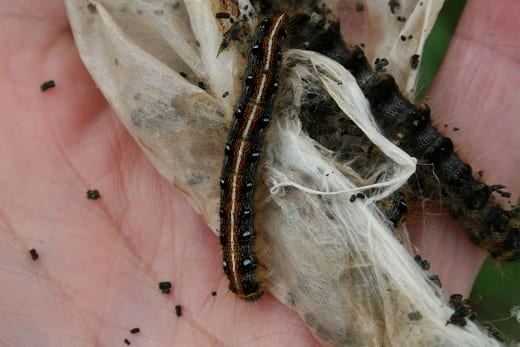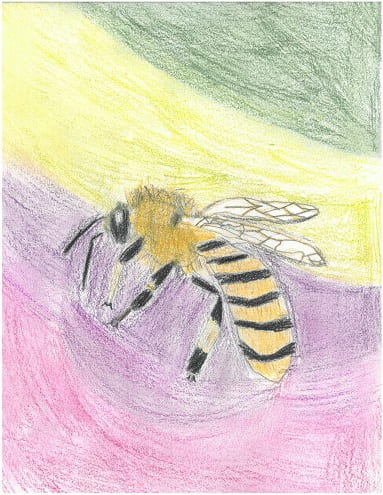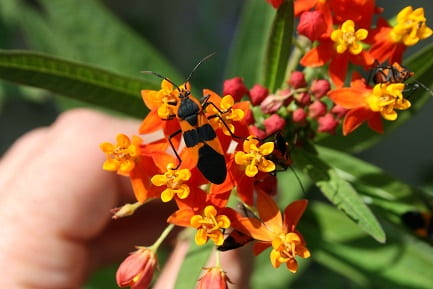–by Dr. Raymond Cloyd
Dormant oils can be applied to certain ornamental plants and fruit trees during the winter to kill insect and mite pests that overwinter as eggs or mature females. Consequently, dormant oil applications can help reduce inputs from insecticides and miticides early in the growing season (spring). The advantages of dormant oil applications include: 1) a wide range of activity against the life stages of mite and scale insect pests including the eggs and 2) relatively minimal harm (toxicity) to humans and other mammals. In general, dormant oils are derived from paraffinic crude oil and are the heaviest of the petroleum-based oil sprays with a low unsulfonated residue (Figures 1 and 2).

Figure 1. Dormant oil product (Raymond Cloyd, KSU)

Figure 2. Close up of label of dormant oil product. Note the unsulfonated residue value is 91% (Raymond Cloyd, KSU)
The unsulfonated residue is an assessment of the compounds remaining after distillation and refining that can harm plants. An unsulfonated residue >92% indicates a highly refined product with less potential for phytotoxicity (plant injury). Dormant oils typically have an unsulfonated residue value <92%.
Dormant oil applications kill the overwintering life stages of cerain mites and scale insect pests (Figure 3)
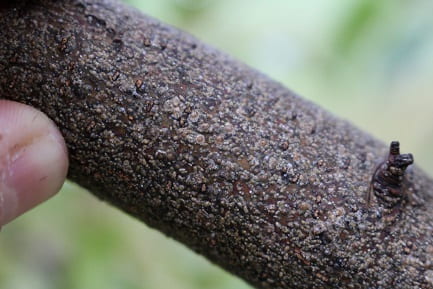
Figure 3. San Jose scale on branch of apple tree (Raymond Cloyd, KSU)
prior to their becoming active in the spring. Applications are made during winter to deciduous ornamental plants and fruit trees. A 2% to 4% application rate is commonly recommended from early winter through early spring. Dormant oils have contact activity and suffocate the insect or mite pest overwintering life stages by blocking the breathing pores (spiracles) or directly penetrating and disrupting cell membranes. However, dormant oils have minimal residual activity (persistence) once residues dissipate, so thorough coverage of all plant parts is important.
Dormant oils are applied to all plant parts. Therefore, the overwintering life stage of an insect or mite pest must be located on the plant. However, not all insect and/or mite pests overwinter on plants. For example, dormant oil applications are not effective against the twospotted spider mite, Tetranychus urticae, because the mite overwinters as a female in plant debris or mulch. However, the spruce spider mite, Oligonychus ununguis, overwinters as an egg on plants, primarily conifers, such as: arborvitae, hemlock, juniper, and pine. Therefore, dormant oil applications will be effective in killing overwintering spruce spider mites.
Dormant oils are effective in killing the overwintering life stages of certain scale insect pests, especially those that overwinter as first and/or second instars or nymphs (crawlers) on ornamental plants and fruit trees. For instance, euonymus scale, Unaspis euonymi, overwinters as second instar nymphs or mature females on the branches and are susceptible to dormant oil applications. However, scale insect pests that overwinter as eggs; such as, oystershell scale, Lepidosaphes ulmi, and pine needle scale, Chionaspis pinifoliae (Figure 4),
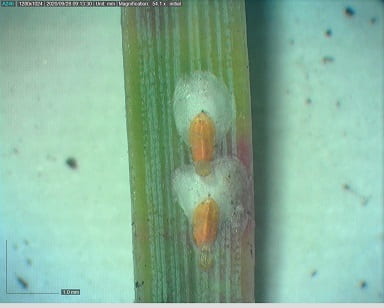
Figure 4. Pine Needle Scale Females (Raymond Cloyd
are less susceptible to dormant oil applications because the eggs are stacked or piled on top of each other underneath the dead female (Figure 4). Consequently, dormant oils cannot penetrate and contact the eggs located underneath the dead eggs or those located in the bottom layer. Therefore, insecticide applications are required in the spring when nymphs emerge (eclose) from the eggs and then start emerging from underneath the dead female scale covering.
Some plants, such as arborvitae, beech, redbud, and certain maples (Japanese, red, sugar, and amur), are sensitive to dormant oil sprays applied to the branches or the trunk. Moreover, the needles of Colorado blue spruce, Picea pungens, can be discolored or change from blue to green following a dormant oil application. Phytotoxicity can be a problem when >4% application rates are used and/or when applications are performed in early fall before dormancy or in late spring at bud-break. Problems affiliated with phytotoxicity are less likely to occur when applications are made in late November through February, which is when most plants are completely dormant.
Dormant oils should never be applied to plants that are stressed because stressed plants are more susceptible to phytotoxicity. For instance, lack of moisture, temperature extremes, sudden drastic changes in the ambient air temperatures after spraying, prolonged windy conditions, and disease or insect infestations may predispose plants to phytotoxicity.
There is a general misconception that insect and mite pest populations cannot develop resistance to dormant oils. However, this is not true. For example, a Christmas tree plantation of Scots pine, Pinus sylvestris, trees were sprayed with dormant oils for over 10 years in succession to “control” pine needle scale. Eventually, the scale population became more and more difficult to “control.” Why? Well, what was discovered was that the scale covers increased in thickness, which prevented the dormant oil from penetrating the outer covering and killing any eggs.
Dormant oil applications performed during the winter can reduce insect and/or mite pest populations during the growing season. Therefore, inputs from insecticide and/or miticide applications can be reduced, which will preserve any natural enemies (parasitoids and predators); thus allowing them to naturally regulate insect and/or mite pest populations.

